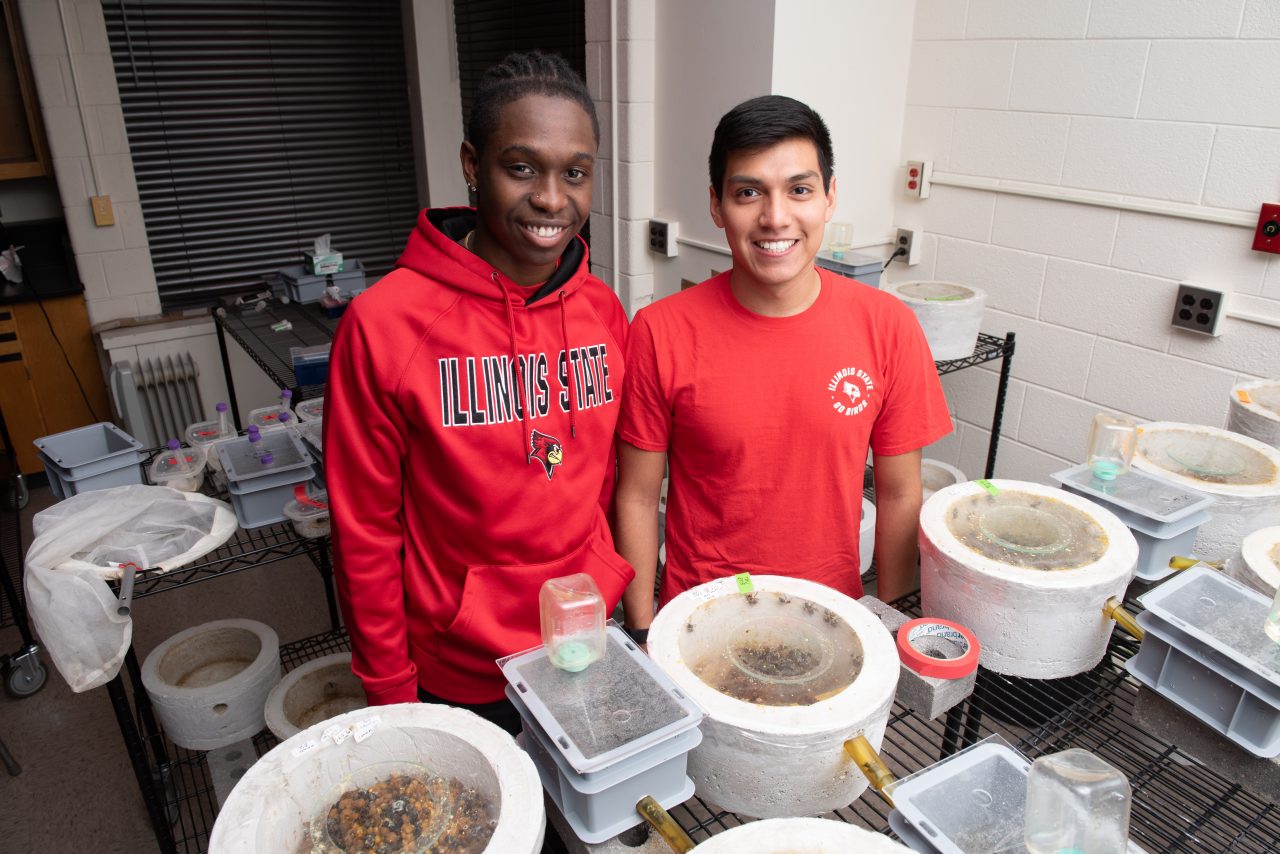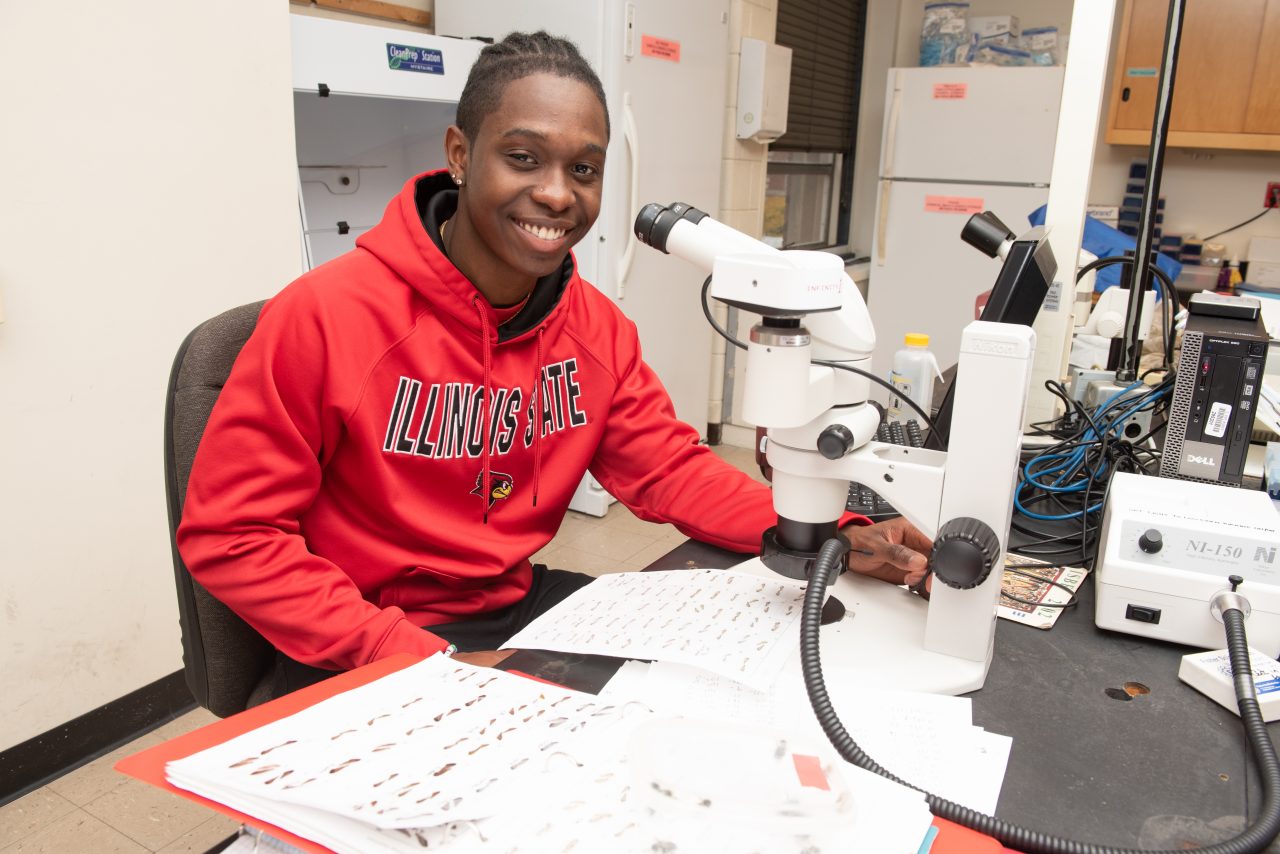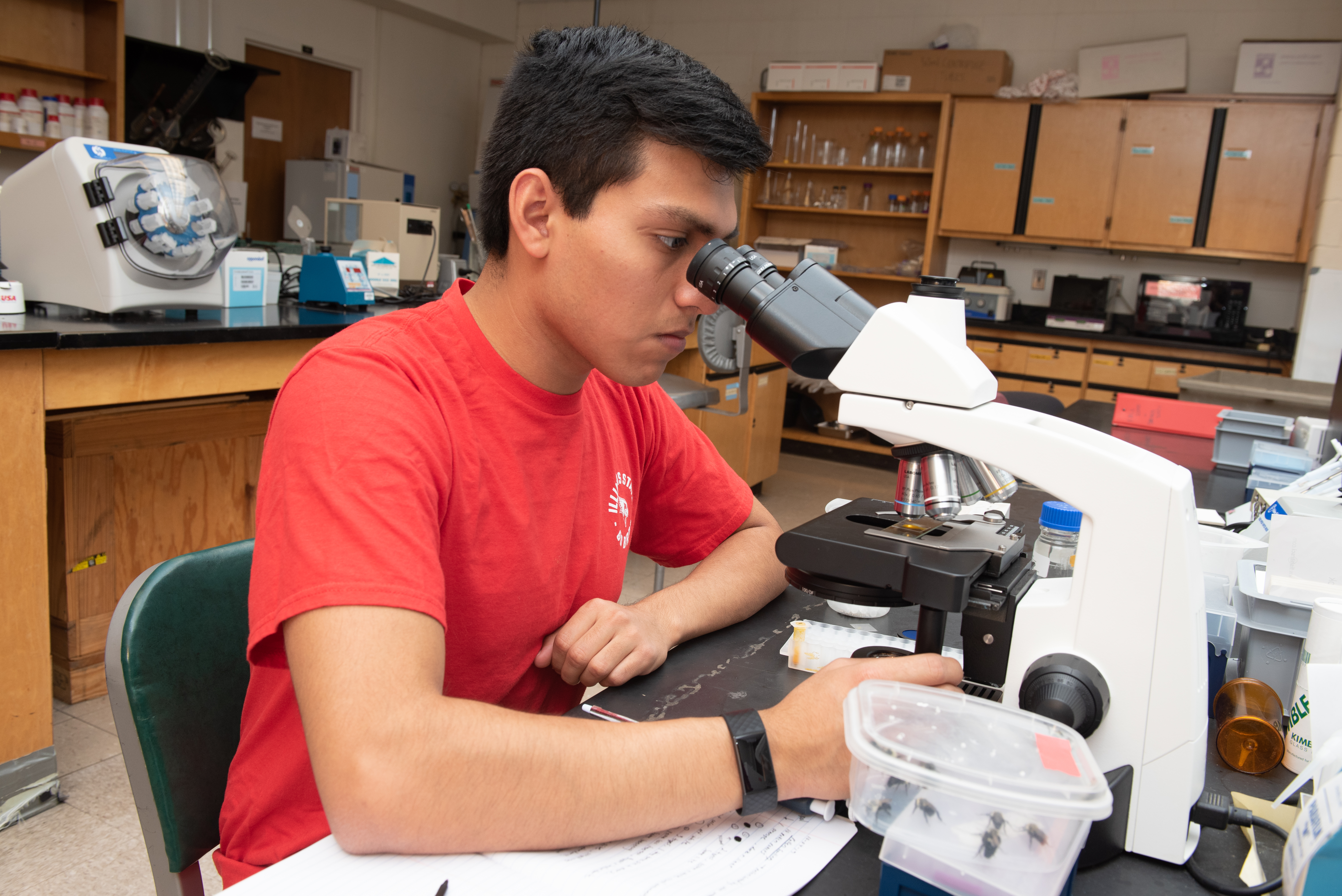On most days, you can find Associate Professor of Infectious Disease Ecology Ben Sadd and his students in their Felmley Hall of Science laboratory studying bumblebees.
“We look at how the environment influences infectious diseases of bumblebees,” said Sadd. “We also look at how bumblebees interact with their beneficial microbes, particularly within their guts.”
The Sadd Lab may focus on bumblebees, but the researchers’ findings can be applied to better understand human health.
“We are mainly interested in understanding the causes and consequences of variation in infectious disease,” said Sadd. “We use insects as model systems to do that.”
The lab is part of the School of Biological Sciences, and the research is funded by the National Institutes of Health (NIH), National Science Foundation (NSF), and the U.S. Department of Agriculture (USDA).
“This is research that is federally funded and presented in international journals,” said Sadd. “This puts both ISU and our students involved in the research on the international stage.”
Abe Martinez and Earon Grinage, both molecular and cellular biology majors, have applied the experience they’ve gained researching in the Sadd Lab to pursue prominent research opportunities off campus.
Last summer, Grinage was one of 25 students selected from a pool of 1,000 applicants to attend a summer research program at the University of Maryland School of Public Health. During the NIH-funded program, Grinage worked in a human performance biopsychology lab where he explored how cognitive function affects motor performance.
“I learned a lot about how thinking affects performance,” said Grinage. The research, focused on therapeutic recreation, offered Grinage some hands-on experience related to his future career in sports medicine.
Martinez spent last summer attending a Research Experience for Undergraduates (REU) program funded by the NSF at Colorado State University. The REU program focused on bioengineering.
“I learned not only different lab techniques but also gained confidence in researching,” said Martinez. “I learned how to ask questions; I learned how to interact with faculty and other graduate students.”
Additionally, Martinez has received a scholarship to attend and present at the Society for Advancing Chicanos/Native Americans in Science (SACNAS) National Diversity in STEM Conference being held October 31–November 2 in Hawaii. Martinez will be presenting work that he completed with Illinois State graduate student Kerrigan Tobin.
“I don’t see undergraduates simply as help who come in and do research for the sake of it,” said Sadd. “I see everyone in the group as part of an interactive team, and that’s very important to me.”
Martinez remembers exactly what drew him to the Sadd Lab. “It seemed like he had created this team that works so well together,” said Martinez. “It seemed like a group that was really diverse and really well put together.”
Sadd and his students take pride in their diverse research group. Martinez is from Des Plaines, while Grinage arrived at Illinois State from Belize City, Belize.
“Belize is a very community-based environment and a cultural melting pot,” said Grinage. “I feel like that has helped me a lot in the research setting.
“(Sadd) really likes working with a diverse group of students, and I feel like that’s added to our lab dynamic. That’s really what helps us succeed.”
As seniors, Martinez and Grinage are both preparing for life after graduation and plan to attend graduate school. “Honestly, I just want to be a great representation of Belizeans,” said Grinage. “I want to represent all minority students in STEM.”



